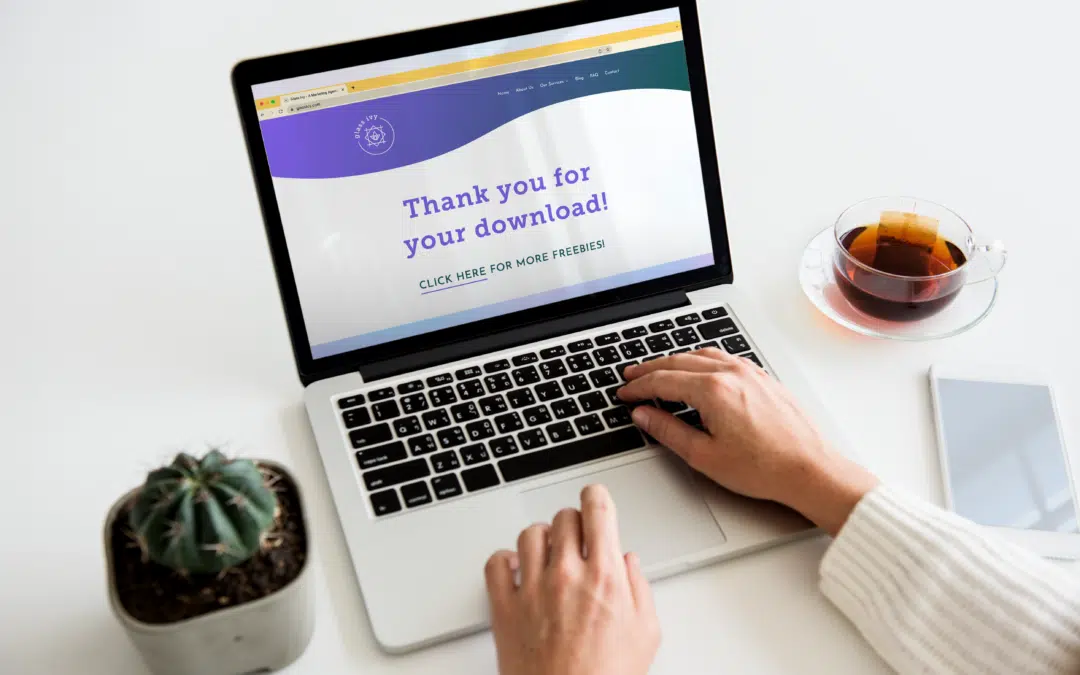There are several steps small businesses can take to drive traffic to their website and expand clientele. One that can be easily utilized is a “freebie” called a lead magnet. While it’s not a quick fix, if you focus on the right lead magnet for your business it can deliver you leads for months.
What’s a lead magnet?
To simplify it, a lead magnet is something you give away for free as an incentive to get someone signed up for your email list. These freebies can help small businesses leverage their potential customers to get more leads and sales. Anything that offers value to a potential client can be considered a lead magnet. Small businesses should take a closer look at their business model, what they use daily for their clients, and what processes they follow to determine what lead magnet fits best. According to Lisa Anne Coaching and HubSpot, here are 10 lead magnets that can help amp up your business.
1. EBooks
Electronic books (eBooks) are popular because they’re easy to make. Short eBooks with useful substance that can be formatted into a pdf are recommended. If you have several blog posts that cover a similar topic, these make the perfect combination for an eBook. Examples: “5 Ways to Help Your Toddler Sleep” and “How to Keep Your 2-Year-Old Entertained” could be added to an eBook with the title “Tips and Tricks for Parents of Toddlers.” The key to creating a successful eBook lead magnet is having an enticing title for it. Sometimes a title can be the difference between a great lead magnet and one that could flop. The title must be in line with the interest of your target audience while also being something that’s in line with what your business offers. Position yourself as an expert and show that you’re knowledgeable about what you’re offering. EBooks lend themselves to be more of an overview instead of covering a specific niche.
2. Webinar
Live or prerecorded webinars can create a great conversion rate from attendee to customer. You want to make sure it’s not just a sales pitch but that it provides value and education to potential clients. According to an article by Jack Flynn for Zippia, companies have seen a big increase in webinar attendance since the start of the COVID-19 pandemic. The average attendee conversion rate is reportedly 55%. The key to a successful webinar is to remember the four U’s: Useful, urgent, unique, and ultra-specific. The formula will increase attendee engagement. According to Mary Clark Navarro from Vibe, the following steps are what you should take when considering hosting a webinar.
- Select your webinar platform
- Choose your topic
- Find a convenient date and time
- Plan and organize your content
- Practice, practice, practice
- Set yourself up for success
- Connect with attendees post-webinar
- Take stock and refine your strategy
3. A Guide
A guide can be similar to an eBook format-wise, but it instead targets specific problems. This can include a collection of instructions to help clients solve a particular problem. Step-by-step guides provide an easy-to-follow lead magnet that will help drive traffic to your business. An example of this could be “3 Ways to Start Eating Healthy.” This could be a lead magnet for a personal trainer or health coach.
4. Training Course/Master Class
Industries with a focus on training/coaching people can see a benefit from offering free courses or classes. Can you give away free sessions? This allows prospective clients to see what they’re missing out on without giving away the entire value proposition. An example of this would be a free interviewing coaching session or a free first personal training session.
5. Trials
Everyone loves to try something before they buy it! These introduce potential clients to your business and give them an idea of the quality you have to offer. With trials, you’re also adding them to your email list which saves the potential client in your database. If they’re impressed by the entire experience they will be interested in becoming a client. You do have to be careful with these types of freebies though because there has to be some level of a barrier to entry, you can’t just give everything away for free to everybody. Set boundaries and find the balance between giving it for free and attracting the right people.
6. Templates
Based on what you’re trying to sell it must solve a very specific problem. So those who will actually use the template will be the ones who sign up for it. This is how you can ensure you’re attracting the right people for your specific business. For example, a social media caption template or a meal plan could be made into a free template.
7. Checklists
Checklists are becoming more popular and there are actually apps out there with millions of downloads from people using them to create checklists. If you can make a checklist that helps people organize their lives, business, etc., then you’ve got a good lead magnet. A few examples of checklists are “10 things to pack in your carry-on bag” or “20 things you must get done before launching your business.” Your checklist depends on the industry you are in and what value your business offers to potential clients. Click here for a weekly checklist small businesses should be following.
8. Groups
Almost everyone is on at least one social media site, including Facebook, so leveraging social media groups can be a great lead magnet for the right business. You can utilize these groups by asking potential clients for their email before letting them into the group. These are groups are where people can build relationships and ask relevant questions about your business, making you the expert on the specific topic they’re interested in. An example of this could be a Facebook group for a cosmetologist. Local business owner Lacey Gebo created a group that’s free to join, but provides specific, paid tutorials for those in the group. She successfully utilizes multiple Facebook groups to grow her business. Here’s a link to her free group, here’s how she utilizes her free online training group, and here is what her private, paid group looks like.
9. Resource Library
You can make a collection of resources that help potential clients achieve their goals. Say you write an article with 100 tools used to drive traffic to your website, you could then create a downloadable resource library that details each tool featured in the article. It could also be as simple as 10 books you recommend for small business owners.
10. Calculators
These aren’t your average calculators but would be a calculator that can help with a specific need your client has. Some examples of this include “How much you can afford for a house” or “How to set a budget based on your income.” These are very specific but can be extremely beneficial to the right business. Click here for an example of an effective calculator from SourceClub, a dental group purchasing organization.
How do we measure the success of our lead magnet?
The easiest way to do this is by calculating your email opt-in rate. According to Encharge, your opt-in rate is the number of new subscribers who signed up for your mailing list via your lead magnet, divided by the total number of visitors to your opt-in form.
An example of this is if 1,000 visitors see your email opt-in form and you received 10 sign-ups, your rate was 1%.
Sumo reports that while the average email opt-in rate is 1.95%, the bottom 25% of marketers get a 0.8% sign-up rate, while the ones at the top average a 6.5% rate. This discrepancy could be the difference between using a lead magnet and not using one.
At the end of the day, using a lead magnet comes down to small businesses accessing a potential client’s contact information and beginning a relationship-building process.
At the bare minimum, you should be leveraging contact forms to gather information about your target audience. If you want to improve your lead magnet workflow you can personalize the client experience, use it to attract more than leads (for example: collaborating with a radio/tv host for special segments), and make sure your lead magnet lives on a variety of places on your website.
To learn why branding your business is a key component to lead magnets, click here.
Follow Glass Ivy on social media for more tips on how to market your business: Facebook | Instagram | Pinterest | LinkedIn


